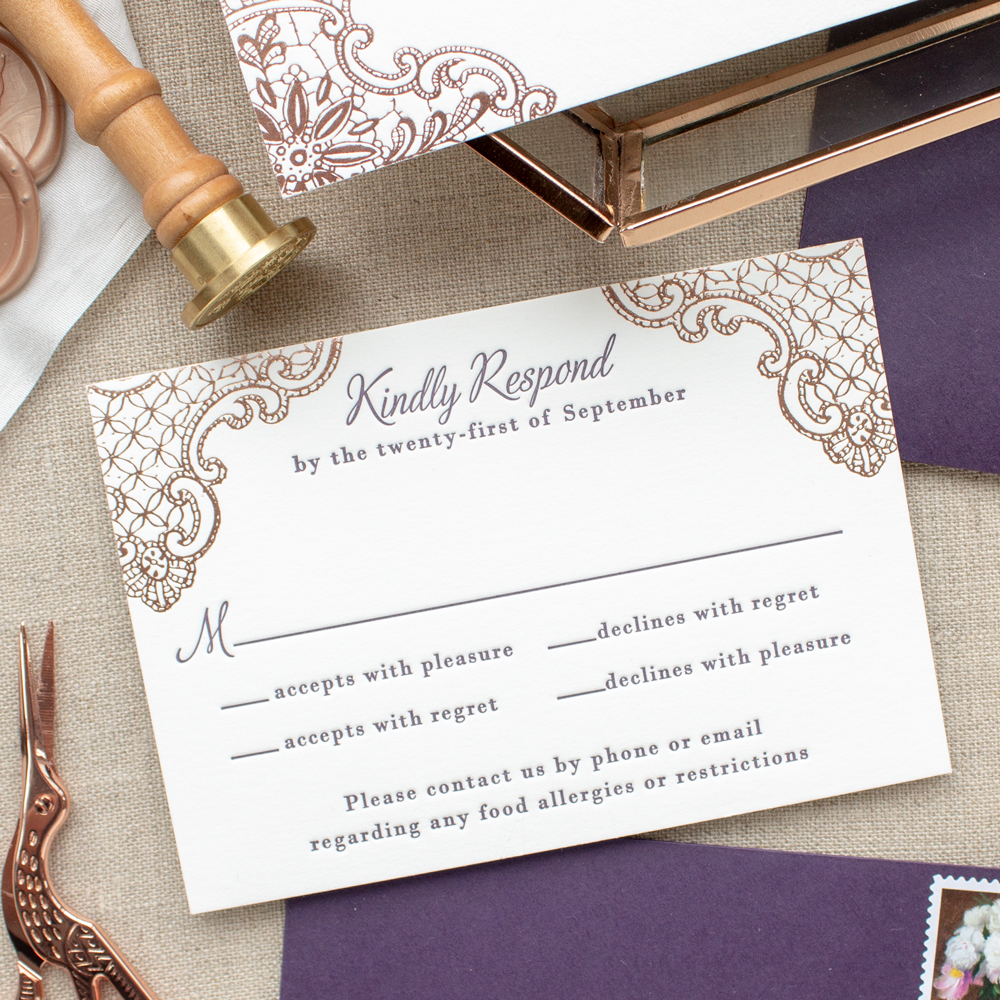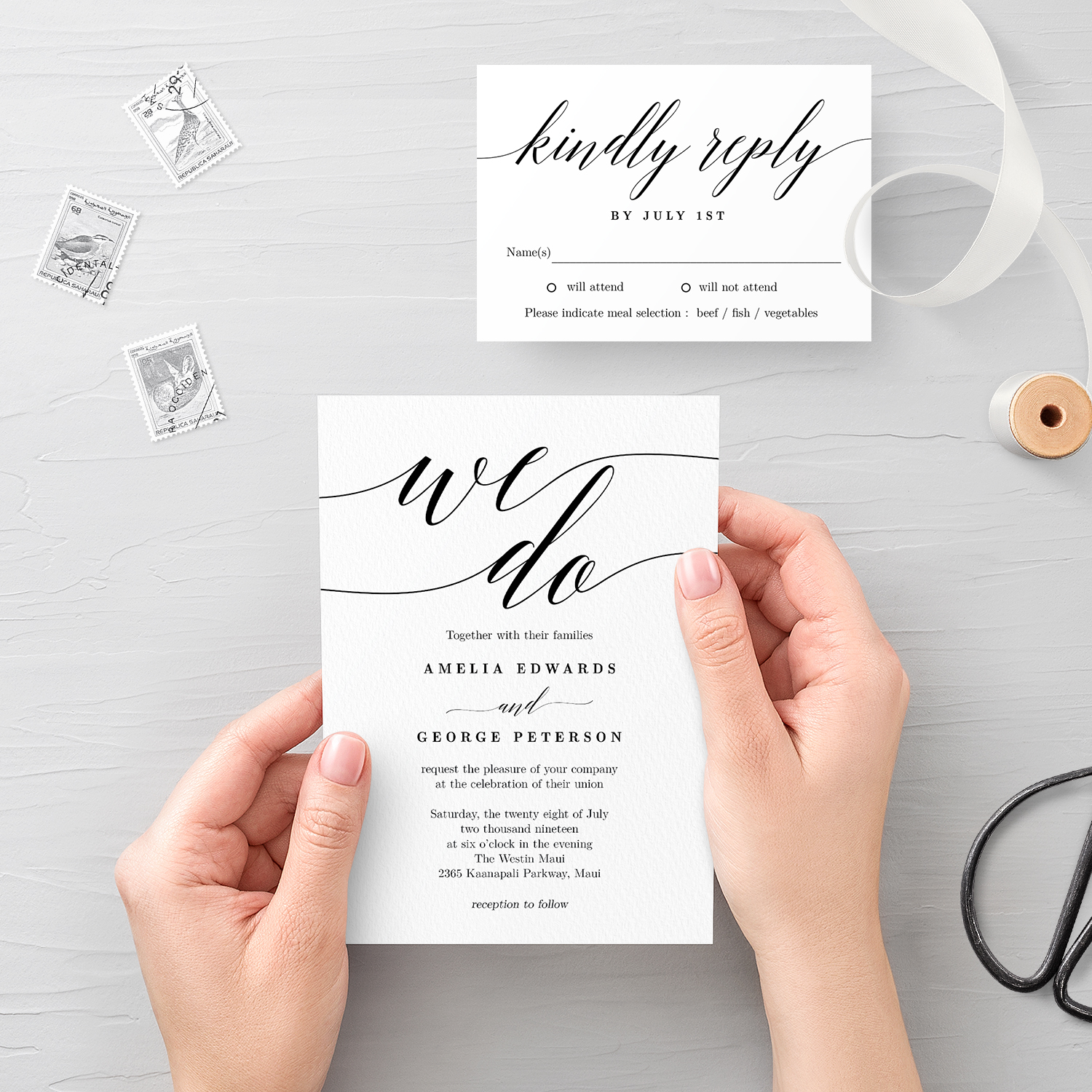

Including an RSVP card is important, as you'll need to confirm a final headcount with your venue and your caterer. Get started with 10 Things to Include On Your Wedding Website. Your wedding website is an incredibly helpful resource for your guests, so don’t skip this step! Your website is the perfect place to include important details from accommodations info to registry info and everything in between. Your guests will appreciate getting everything in one envelope so they can properly plan for your nuptials. These will include other necessary details, like your RSVP deadline and your wedding website address. Now that you've given your guests the basic info, it's time to think about your invitation inserts-the separate cards that are presented in the same envelope as your wedding invitation.
WEDDING INVITES WITH RSVP CODE
Unsure which dress code is right for your wedding? Take our quiz to find out your best match. However, you can definitely include a line that indicates the expectation, whether it’s Casual Attire, Dressy Casual Attire, Semi Formal Attire, Black Tie Optional, Black Tie, or White Tie. Most invites nowadays don't include attire details since you can use your wedding website to communicate this detail.

Including the dress code on your actual wedding invitations is optional. If the ceremony and reception are taking place at the same location, you can simply include a line like “Reception to Follow,” “Celebration to Follow,” or “Dinner and Dancing to Follow.” If your reception is at a different location, you'll need to include a separate reception card with the start time and address. That way, your guests know exactly where they're going and what time the festivities are starting. Whether your ceremony and reception are taking place at the same spot or different venues, it's imperative that you include the name and location. On formal invitations, write out the time rather than using numerals (for example: four o'clock in the afternoon). Ensure you provide the hour and the time of day (a.m. Stating the start time will let guests know how early they need to arrive. (Though hopefully your guests have marked it off already thanks to your save-the-dates.) Avoid latecomers by communicating the time of the ceremony on your invitations.

Of course, confirming the date of your wedding is an absolute must. It's your wedding, so do what feels right to you.
WEDDING INVITES WITH RSVP FULL
For example, a black-tie ballroom soiree might call for full names while a casual beach ceremony would call for just your first names. However, you can also use the formality level of your wedding as a guide. If your parents' names are mentioned, typically the couples will use their first and middle names. You can include your first and middle names, first and last names or go for your full legal names (first, middle and last). LGBTQIA+ couples can order their names alphabetically, by age or however else you'd like. Typically for heterosexual couples, the woman's name goes first, but you can order your names any way that feels right to you. Of course, you'll want to include the names of the people getting married. The invitational line is followed by a request line, such as “Request the Pleasure of Your Company,” “Invite You to Celebrate the Marriage of,” or, if the ceremony is taking place in a place of worship, “Request the Honor of Your Presence.” The Couple's Names If your parents are contributing financially or covering all the costs, they should be included.
WEDDING INVITES WITH RSVP PRO
Pro tip: The hosts are typically the people paying for the event. Invites typically open with an "invitational line," which lists the names of the hosts (whether it's your parents, other relatives or you, the couple). After reading this, you'll be an expert on what to include on your wedding invitations. If you're unfamiliar with some of the required elements, we wrote up some explainers.


 0 kommentar(er)
0 kommentar(er)
